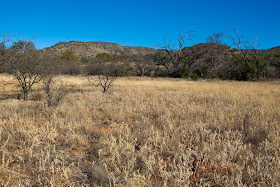 |
| Sinagua calendar petroglyph at V-bar-V |
Difficulty: Easy
Access: Mostly paved road to trailhead (short stretch of gravel), Red Rocks Pass required
The little-known V-bar-V Heritage Site in Arizona's Coconino National Forest, just south of Sedona, hosts the most extensive known collection of Sinagua petroglyphs. Carved into a rock face near the constant water source of Wet Beaver Creek, the V-bar-V petroglyphs include at least 1000 symbols chiseled by Native Americans, perhaps over the course of hundreds or thousands of years. It's a magical spot to contemplate how humans have found a way in this desert landscape for millenia. The catch is that the site is rarely open: the hike is only accessible from 9:30 AM to 3 PM from Friday through Monday to protect this extraordinary archaelogical site. However, if you're nearby when the site is open, I highly recommend stopping and making the mile round-trip walk to the petroglyphs.
The Sinagua were a culture that inhabited Arizona between about 500 and 1500 AD; they lived in the general vicinity of the Mogollon Rim, the geographic transition between the Colorado Plateau to the north and the southerly Sonoran Desert. Absent from the dwellings that they had built by the time Europeans arrived in the area, their current name derives from the Spanish name for the San Francisco Peaks north of Flagstaff- "sin agua," or "without water." The Sinagua likely picked up farming practices from the Hohokam to the south and had many cultural similarities to the Ancestral Puebloans of the Colorado Plateau to the north. Today's Hopi, who live on the drier mesas of the Painted Desert, claim the Sinagua as ancestors.
I hiked this trail on a weekend afternoon as I drove south from the Flagstaff area back towards Phoenix. I left I-17 at exit 298, but instead of following the crowds north along Arizona Route 179 to Oak Creek and Sedona, I headed to the east and south instead, following a narrow, potholed paved road leading towards Beaver Creek and V-bar-V. The road was well signed and after four miles of driving I crossed two bridges over Wet Beaver Creek and arrived at the entrance for the V-bar-V site. The gate at the entrance to the site closes at 3; after passing the gate, the last few hundred yards of road are gravel, leading to large parking lot. A Red Rocks Pass (valid in the Sedona area) or a federal lands pass is required for parking.
From the parking area, the trail led downhill to a small visitor center and a chimney marking the site of a house on the former V-bar-V Ranch. The V-bar-V name comes from the symbol branded on cattle at the ranch, which consisted of two vertically stacked Vs separated by a bar. The petroglyphs in the area were first known to the ranchers here but lay in relative obscurity until the Forest Service bought up part of the ranch in the 1990s.
 |
| Chimney remnant from V-bar-V ranch |
 |
| Wet Beaver Creek valley |
 |
| Sinagua Petroglyphs at V-bar-V |
 |
| Sinagua petroglyphs- clan symbols |
 |
| Petroglyphs with spiral |
A few notable petroglyphs that you should keep an eye out for: the running man and a caterpillar are carved into recesses to the left of the main panel.
Why did the Sinagua pick up and leave from the lush confines of Verde Valley and the Mogollon Rim, instead migrating to the dry, harsh mesas of the Colorado Plateau to become today's Hopi? The docent told us that archaeologists aren't sure, but that Hopi histories hold that it was simply time to go.
Talking to the ranger, I got an idea of the scale of pre-contact human habitation in the Southwest. It's too easy to think of the large villages at Mesa Verde and Chaco as isolated outposts in a vast American wilderness; but in reality, these landscapes were teeming with villages. In the Verde Valley, numerous small pueblos have been discovered nearby, with countless petroglyphs scattered on rocks throughout the landscape. In fact, there are so many cultural artifacts littered across the landscape that federal agencies no longer try to document them, as documentation would require a measure of protection and no agencies have sufficient funding for those purposes.
 |
| Running man petroglyph |
No comments:
Post a Comment